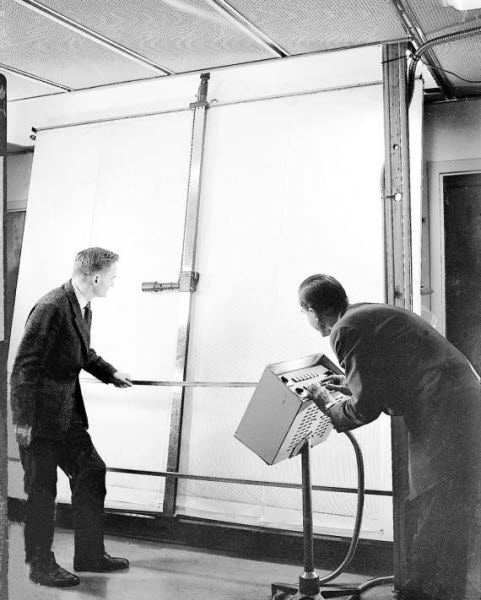
|
| A supertanker takes shape with the aid of the Autokon software package, which was developed at what is now SINTEF in Oslo during the 1960s. Photo: D. Martens/SINTEF |
Thomas Hysing (1917 - 2010) was employed by SI, now SINTEF in Oslo, when he took the podium at an international conference in Moscow in 1960. In his talk, he described the development of a complete computer-aided design (CAD) system for shipbuilding.
From manual work ...
Designing a ship's hull was traditionally a laborious and time-consuming procedure. Line drawings were made to a scale of 1:50. Full-scale tracings were then laid out as the point of departure for cutting and forming plates and frames.
... to numerical control
In 1958, Hysing and his colleagues had begun to develop a numerical system for controlling cutting torches. A prototype was installed at Aker Stord in 1960. But how could this produce the signals that would control the system? For this purpose, SI developed mathematical algorithms that could express curved lines and surfaces, and that could be understood by a digital computer.
The result was "Autokon", a system that drew hull shapes and ribs, and indicated how each plate was to be cut and shaped.
"In the same class as Henry Ford"
In SINTEF's jubilee volume (2000) Professor Jon Gulowsen wrote: "The dramatic transformation that Ford introduced in the automobile industry just after the turn of the century found its parallel in shipbuilding in the 1960s, and SI/Autokon and the Aker Group contributed greatly to the process."
Products and services from Norway
Autokon was also the basis of a significant amount of commercial activity in Norway:
• In 1967, Fred Olsen and the Aker Group set up the marketing and consulting firm Shipping Research Services (SRS), which developed and sold Autokon on the global market.
• Kongsberg Våpenfabrikk (KV) manufactured and sold control systems for drawing machines and cutting torches.
Source: Jon Gulowsen: "Bro mellom vitenskap og teknologi", Tapir (SINTEF Anniversary volume: 1950 to 2000)
